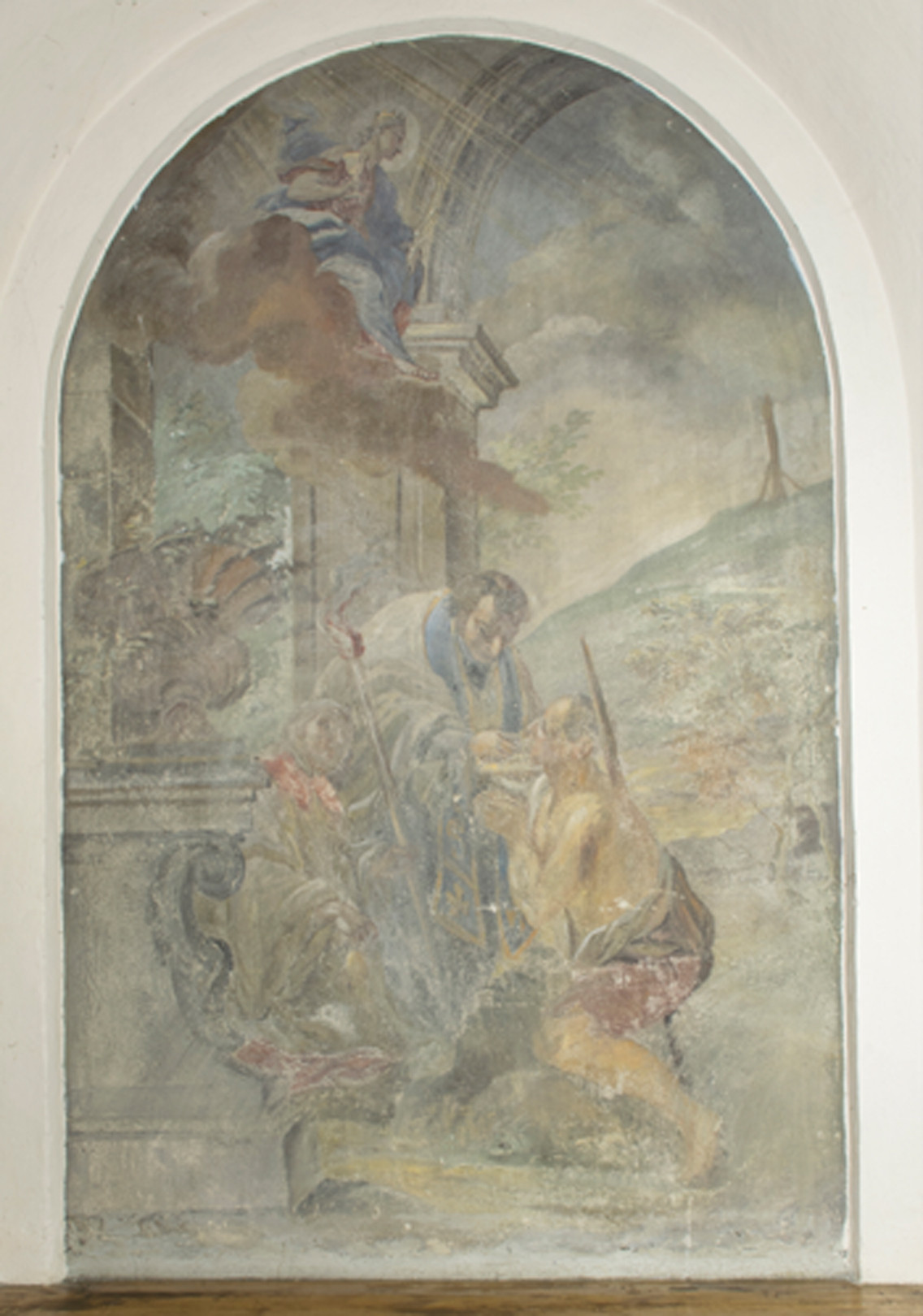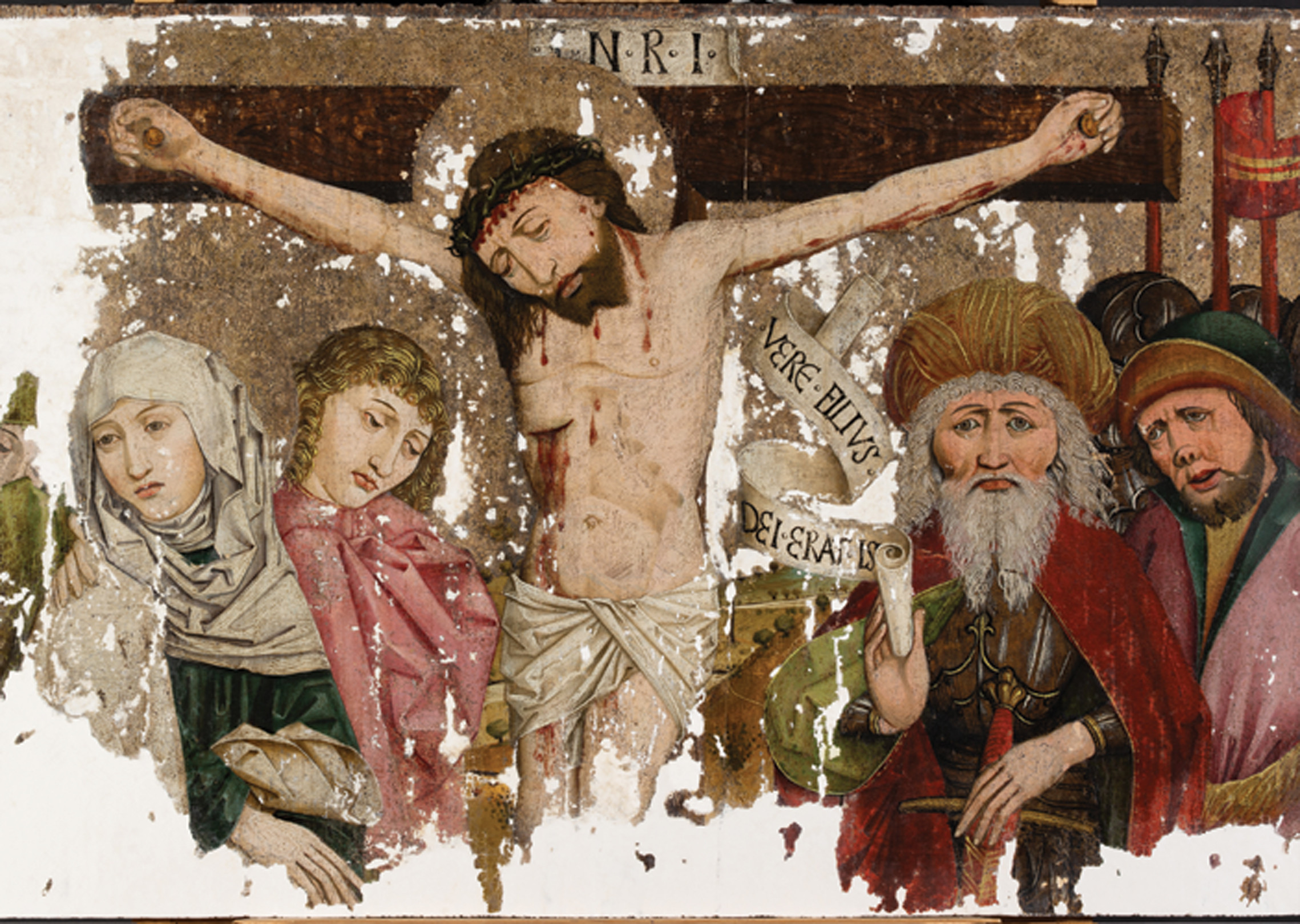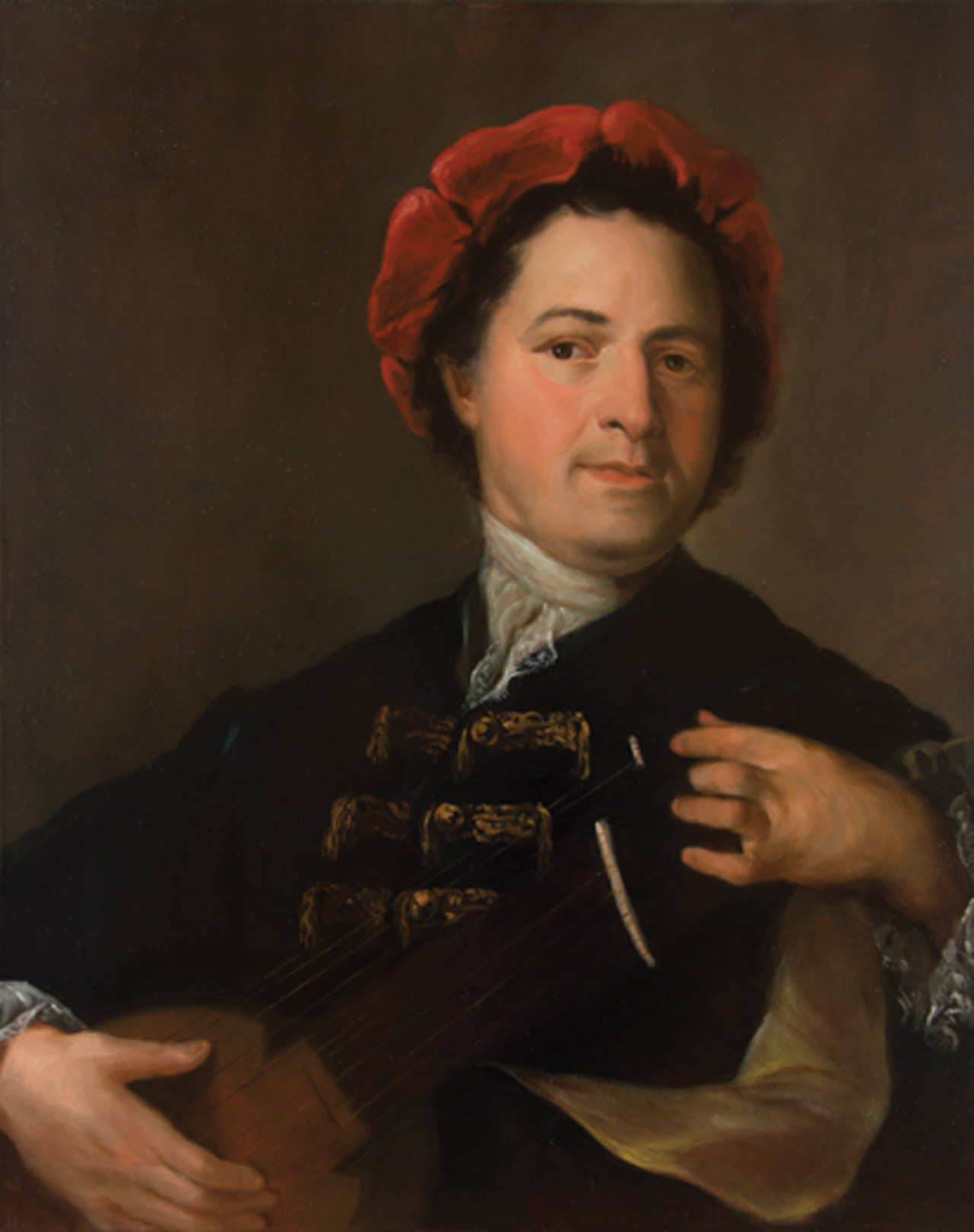Marie Horvathová↓
Gallery
Studies
| 2015–2022 | Restoration of Painted Artworks, AVU |
| 2019 | Účast na třítýdenním workshopu „Consolidation of mural paintings“ na institutu Opificio delle Pietre Dure ve Florencii |
About the work
In the final year of my studies, I was involved in the restoration of paintings on wooden and canvas support, murals, and polychrome sculptures. My diploma thesis also presents technological copies created during the studies at the Academy of Fine Arts.
The mural The Last Great Anointing by František Julius Lux from 1756, situated in the side chapel of St. Barbara in the Domažlice church of the Assumption of the Virgin Mary was in very poor condition before the restoration. The loose painting was covered with a layer of surface dirt, which caused the illegibility of the entire painting. The restoration intervention consisted primarily in securing the loose paint, which in some places had a dusty character. The subsequent removal of dirt and repaints was therefore as delicate as possible, using packs. The final stage of retouching mainly focused on the unification of the paintings’ abrasions and restoring its legibility.
I carried out another restoration on the easel painting The Death of St. Joseph, an oil painting on canvas. I carried out an extensive restoration research of this oval work, mainly due to the painterly changes in the composition in the lower layer of paint, obvious from X-ray photographs. Due to the atypical damage of the entire painting surface, manifested by a large amount of point-dropped painting, the most problematic stages of restoration were gluing and the subsequent retouching.
The practical part of the diploma includes the restoration of the Baroque polychrome sculpture of Christ the Victorious and the late 15th-century panel painting The Crucifixion. The painting was covered by a thick layer of yellow varnish and numerous retouches and repaints. Their removal revealed the extent of damage, especially in the left and bottom parts of the work. The wooden support was thinned to 2–3 mm during the previous restoration work and parquetaged. However, this improper treatment resulted in cracks in the support that endangered the painting. The parquetage therefore had to be removed and replaced with an adequate support system. I consider the removal of the old parquetage and the subsequent making of a new support frame to be one of the most interesting experiences within the practical part of my diploma.
In my theoretical work, I pursue the issue of painting retouch. The aim of the text is to introduce to the significance of the so-called lacuna, the missing place in a damaged painting, and how it influences the way we perceive a work of art as a whole. This part of my diploma also contains an overview of historical approaches to retouching of paintings from the 19th century to the present. The final chapter then discusses the specifics of retouching in the Czech lands.
The theoretical text of the diploma is supplemented by a practical part, focusing on the examples of various approaches to the integration of the missing spots. The individual examples are demonstrated on a selected detail from the panel painting The Crucifixion, capturing a fragmentarily preserved figure in the left part of the painting. It was subjected to various type of retouching, from a minimalist conservation intervention to an imitative supplement.



